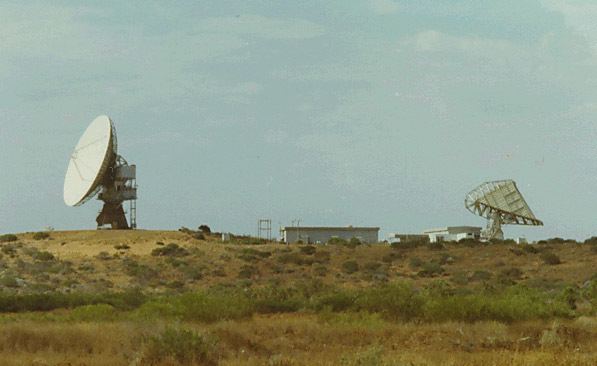Phone +61 8 9941 1146 | ||
 | ||
Address Via Gray Place, Mahony Ave, Brown Range WA 6701, Australia | ||
The OTC Satellite Earth Station Carnarvon was established to meet the need for more reliable and higher quality communications for NASA's Apollo Moon project. NASA contracted Australia's Overseas Telecommunications Commission (OTC) "to provide an earth station near Carnarvon, Western Australia to link the NASA tracking station in that area to the control centre in the USA", also contracting the COMSAT Corporation to launch three Intelsat-2 communications satellites.
Contents
TV and NASA-assist operations
The ‘sugar scoop’ antenna became operational on 29 October 1966 when Intelsat-2A, the first of the three satellites launched, gave OTC and the ABC a brief chance to test satellite TV communications as the satellite drifted to ignominious failure over the Indian Ocean. On 24 November 1966, test patterns for the first-ever live telecasts from Australia to England were successful. The next day, a live BBC television broadcast from a studio in London featured interviews linking UK families with their British migrant relatives standing in Robinson Street, Carnarvon.
The ‘sugar scoop’ became famous again on 21 July 1969, the day of the Apollo 11 moon landing, relaying Neil Armstrong's first steps on the Moon from NASA's Honeysuckle Creek Tracking Station, Canberra, to Perth's TV audience via Moree earth station - the first live telecast into Western Australia.
The OTC station’s eight years of communications support for the Carnarvon Tracking Station began on 4 February 1967, three weeks after Intelsat-2B was launched. A larger parabolic antenna was commissioned in late 1969 to upgrade the support for the later Apollo missions. OTC continued to provide communications support for NASA space programs until the NASA station closed early in 1975. Thereafter it tracked some NASA missions on its own account.
Contract tracking operations
During OTC's last years of operation in Carnarvon, multiple tracking contracts were completed including:
Decommission
The station was decommissioned in April 1987, but the site is still 'actively' involved in solar scientific research, hosting a node of the Birmingham Solar Oscillations Network.
OTC Satellite Earth Station Carnarvon (fmr) is a registered heritage site with the Heritage Council of Western Australia. It has local, national and international cultural-heritage significance.
The Carnarvon Space and Technology Museum opened in 2012.
